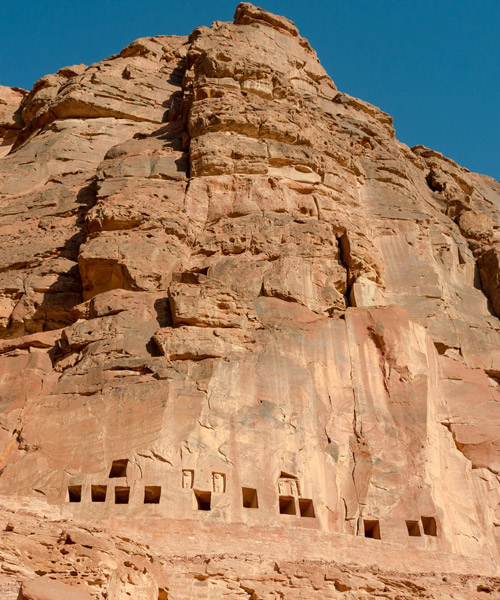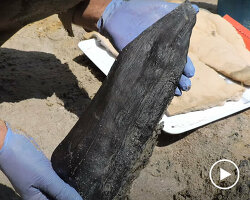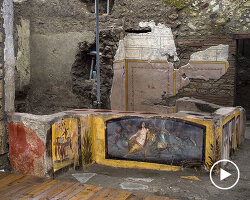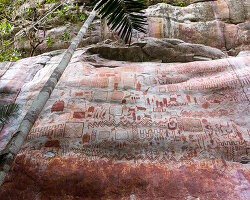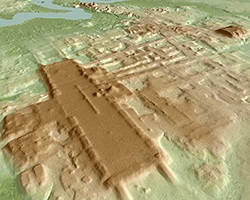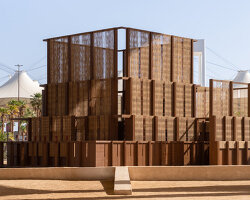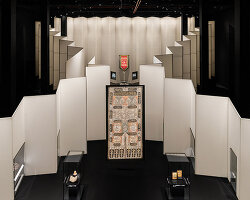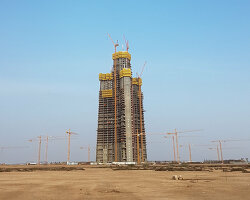as part of an extensive development program launched by the royal commission for al-ula (RCU), a team of world-leading archaeologists have been drafted in to undertake a comprehensive survey of the region in saudi arabia. on a recent visit to amman design week 2019 in neighboring jordan, designboom caught up with the latest updates of the project, which marks the onset of a wider vision as the country opens its doors to foreign tourists for the first time. in a new push for international visitors, a number of tourism-boosting schemes are underway, including a luxury resort designed by french architect, jean nouvel, set to open within the historic site in 2023.
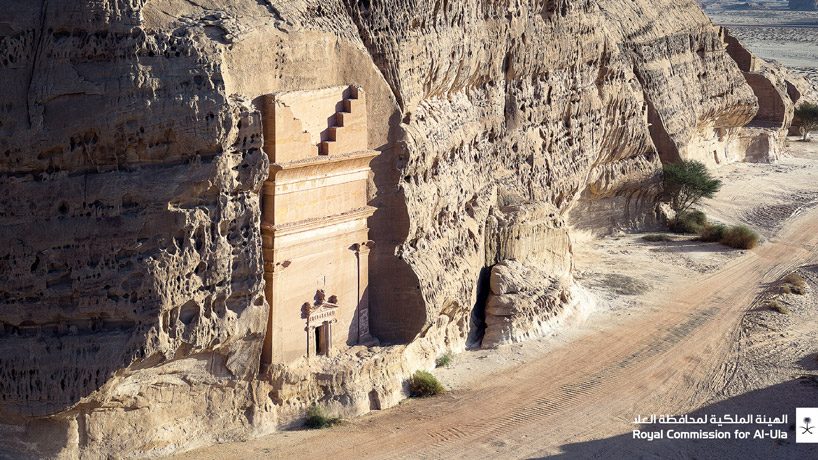
a nabataean tomb carved into the sandstone of al-ula
image © royal commission for al-ula
in order to achieve the goals set out for al-ula, the program is enlisting a team of world-leading experts, led by RCA archaeologist dr rebecca foote, who will carefully document, map and model the area. state-of-the-art technologies and methods are also being employed, such as aerial lidar scanning and photography captured from light aircraft, helicopter and drone. the lidar will be able to ‘see’ what lies amongst the site’s palm groves and vegetation while the helicopter team will record the harder to reach areas.

mada’in salih, al-ula
image © royal commission for al-ula
speaking about the project, dr rebecca foote comments, ‘at the heart of the royal commission for al-ula’s archaeology program is a commitment to preserving al-ula’s extraordinary cultural heritage sites for generations to come. our work observes international best practice standards and utilizes some of the most sophisticated technology available. the public closure of sites such as mada’in salih will allow us to carry out vital work locating, mapping and visualizing al-ula’s past in order to evaluate vulnerabilities and implement appropriate protective interventions throughout the area.’
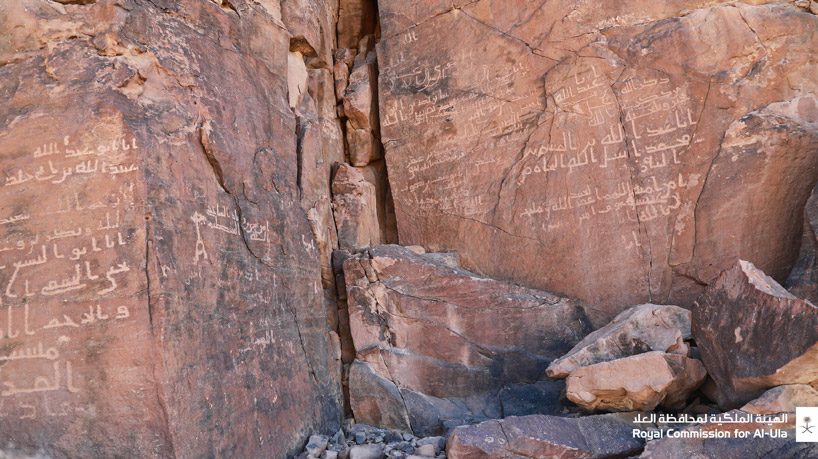
ancient inscriptions
image © royal commission for al-ula
due to its prime location for trade routes, the north-western region of saudi arabia was a key site for the nabataeans – an ancient civilization dating back to the 1st millennium BCE, who are most known today for the astounding temples and tombs they carved into the beautiful ‘rose city’ of petra in jordan. despite petra being well-explored, al-ula has remained largely under the radar to international audiences. however, with this new program, RCU intends to uncover the area’s ancient secrets and welcome foreign tourists to the magical site.

the monastery at petra, jordan, which was also carved by the nabataeans
image © designboom
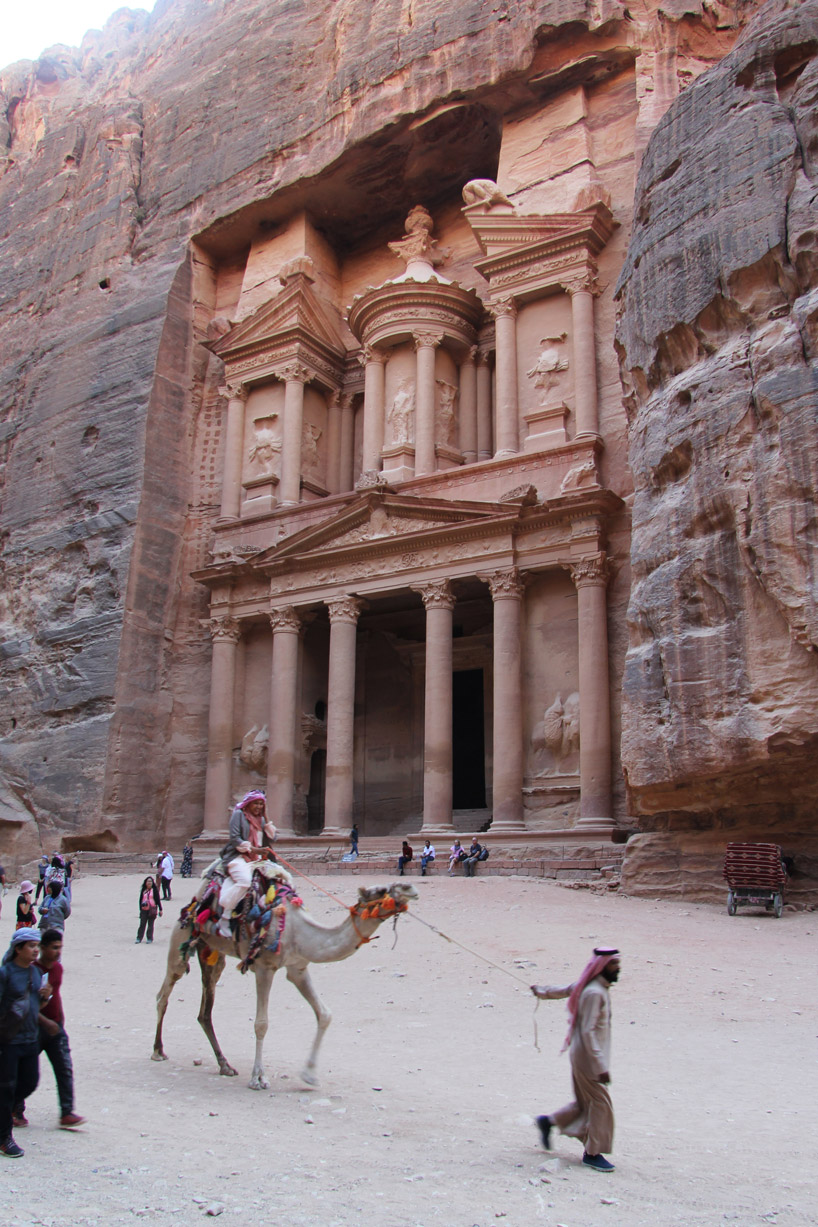
the ancient nabataeans’ capital, petra, jordan
image © designboom
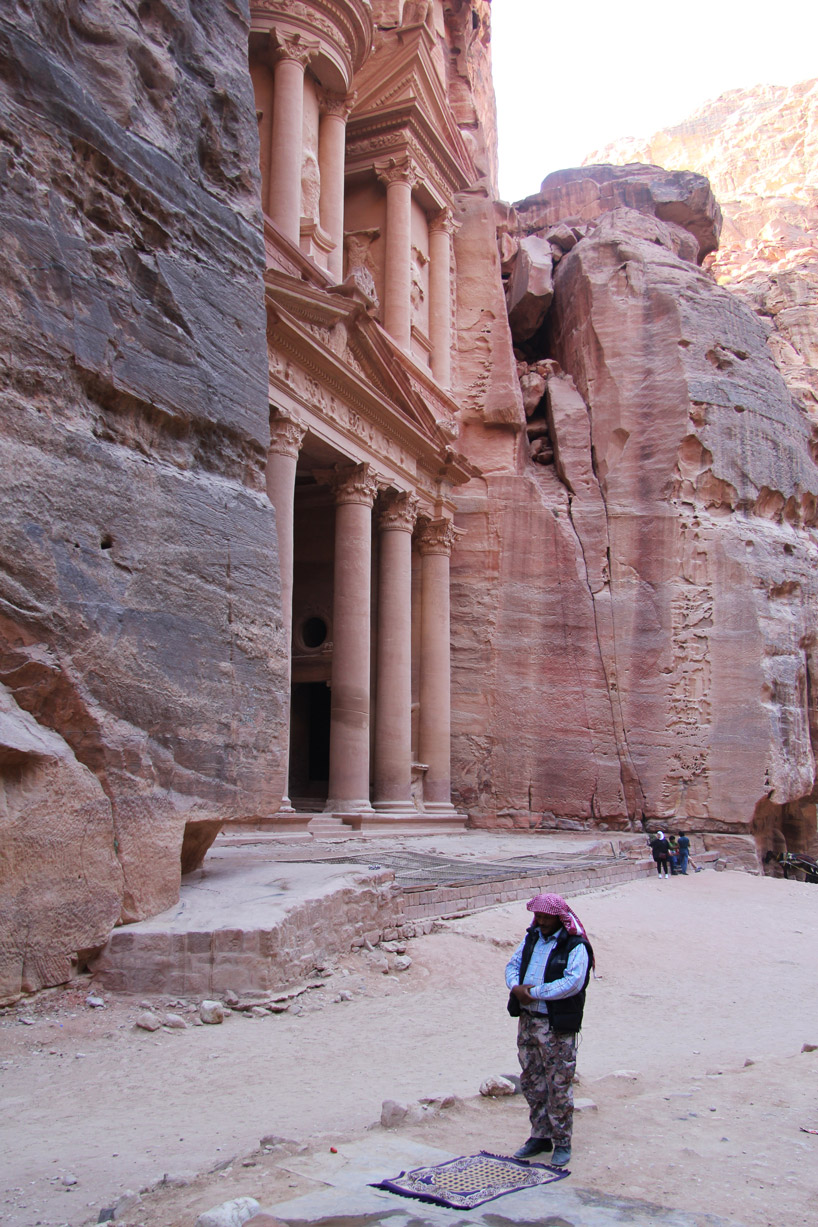
the treasury at petra, jordan
image © designboom
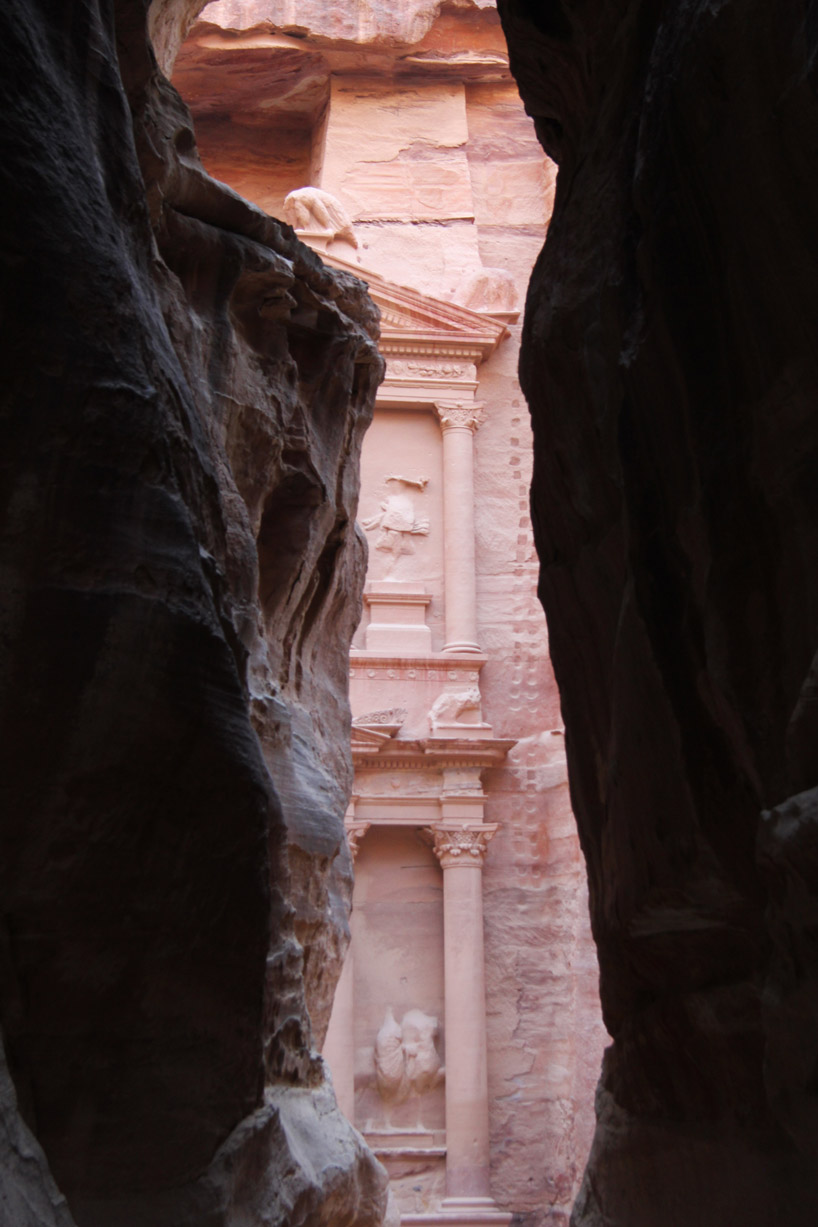
the siq at petra, jordan
image © designboom
project info:
project name: RCU archaeological survey program
location: al-ula, saudi arabia
undertaken by: royal commission for al-ula
